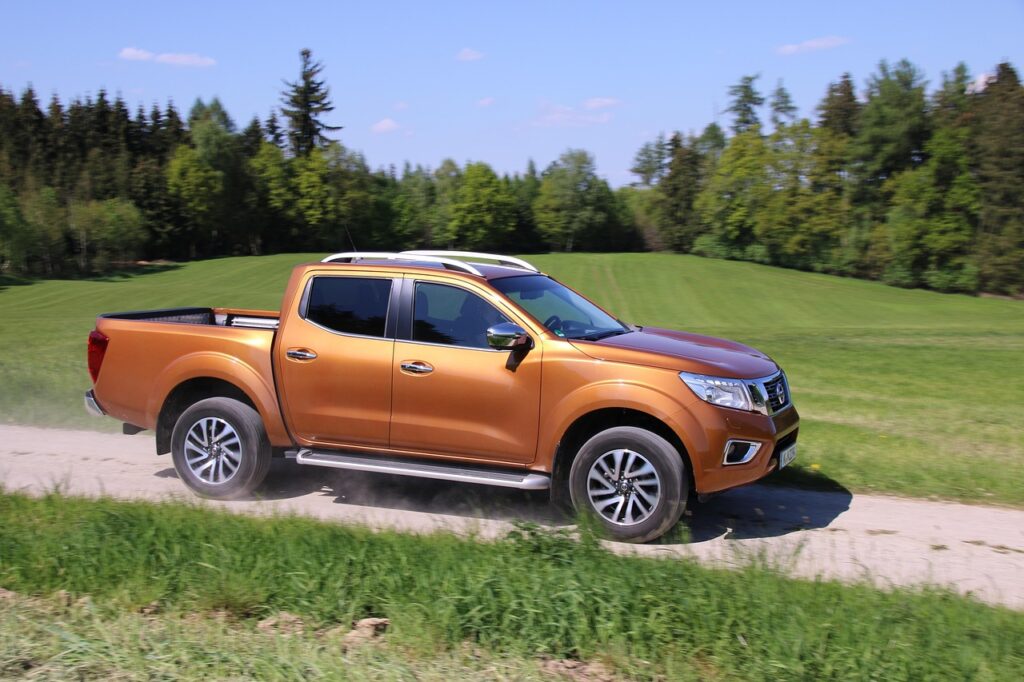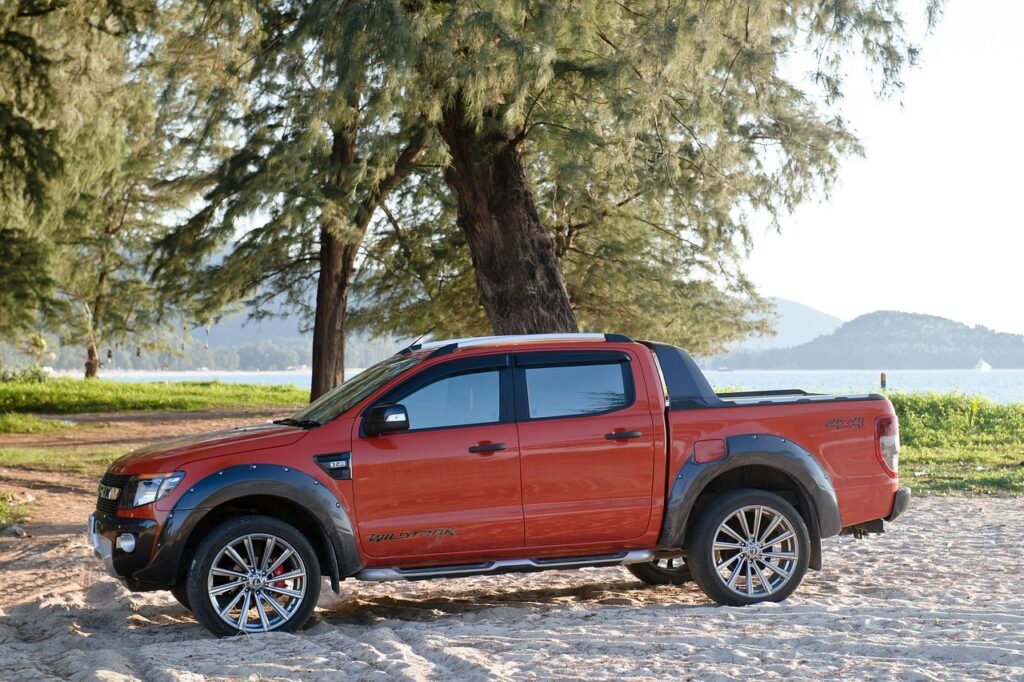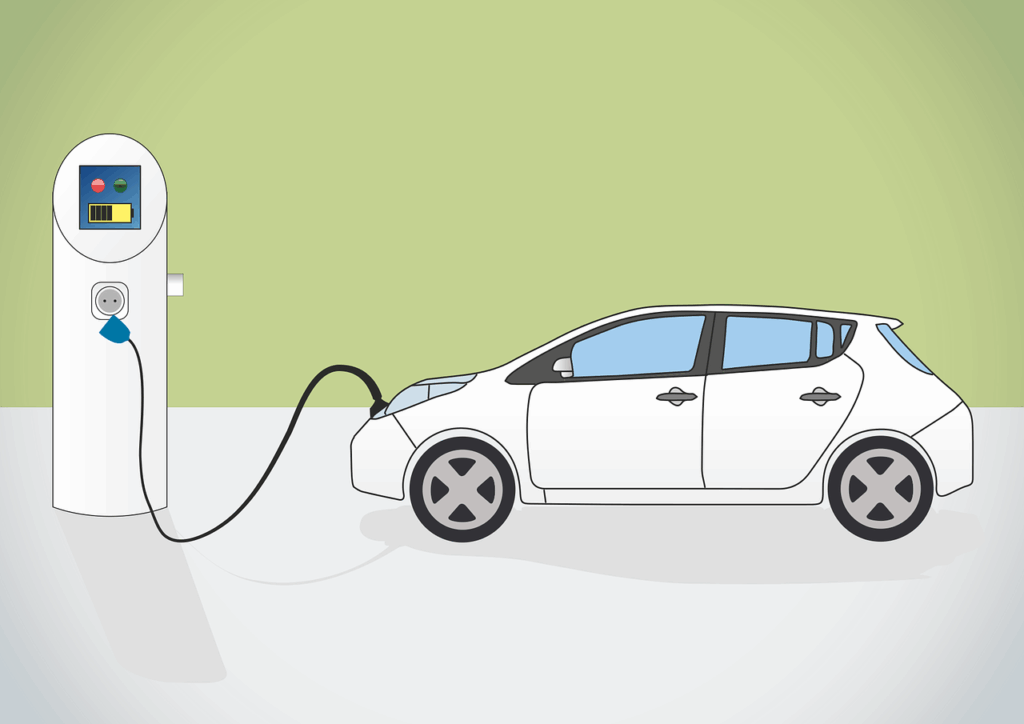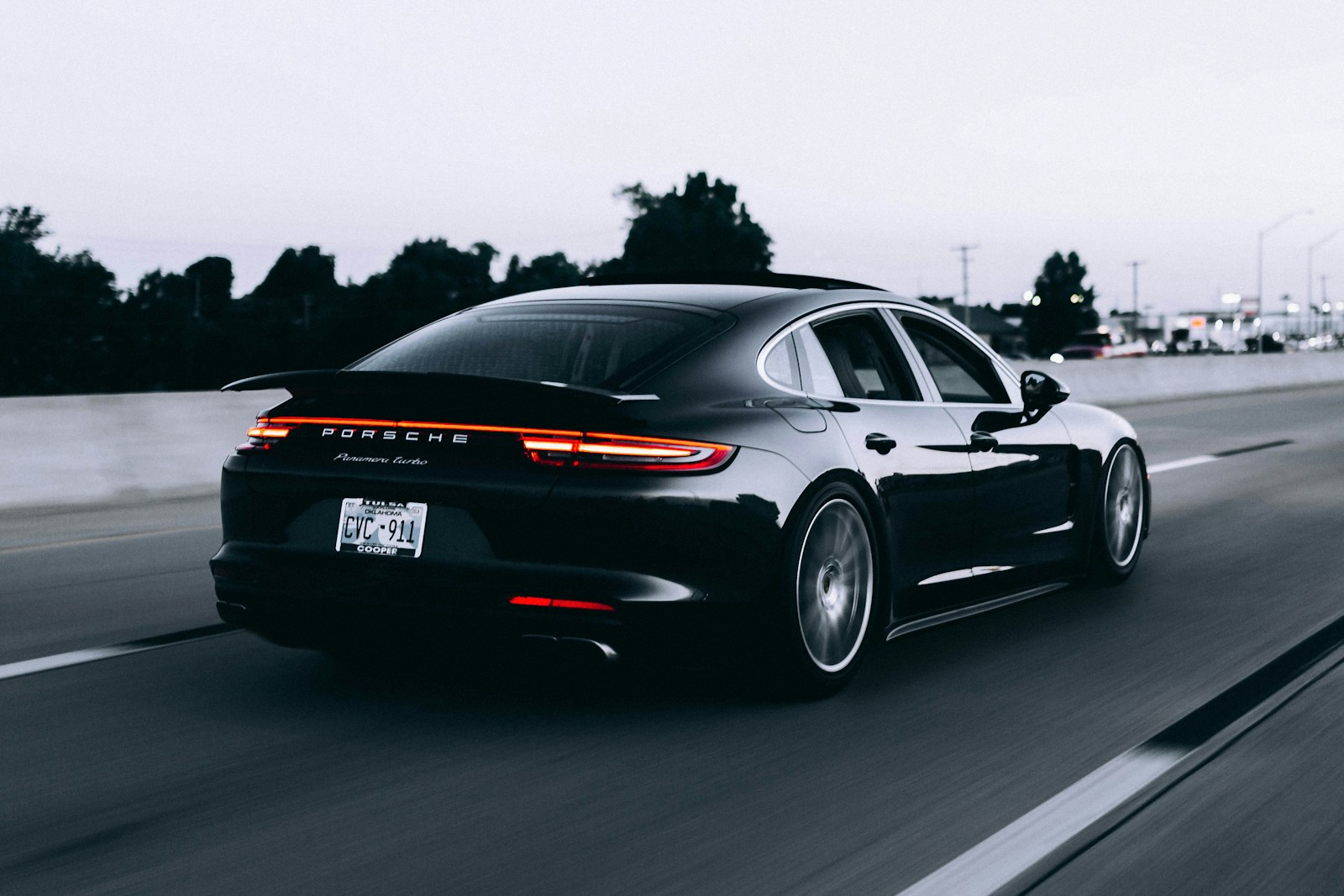
If you navigate American roads with any regularity, the sight of large, imposing pickup trucks is undeniably commonplace. These vehicles, once primarily associated with arduous labor and rugged utility, have transcended their original purpose to become an almost ubiquitous fixture in the American automotive landscape. What makes this phenomenon particularly compelling is its persistence, even as the global automotive industry, and indeed, national policy, pushes aggressively towards an electrified future.
This profound attachment to big, gas-burning trucks and SUVs presents a fascinating paradox. Traditional automakers have committed billions to ushering in an era of electric vehicles, yet simultaneously, they are making a renewed and significant bet on the very gasoline-powered behemoths they once anticipated moving away from. This shift isn’t merely a minor adjustment; it signals a recalibration of strategies driven by complex market realities and consumer preferences that continue to defy expectations.
This article delves into the intricate web of factors underpinning America’s enduring love affair with the pickup truck. From the strategic decisions of major manufacturers like Ford and GM, influenced by the elusive profitability of EVs, to the evolving cultural role of these vehicles and the surprising truth about how they are actually utilized, we will explore the forces that ensure the American truck remains a cornerstone of the nation’s driving experience.
1. **Automakers’ Strategic Retreat from EV Dominance**
The automotive industry is in the midst of a pivotal transition, with traditional automakers having pledged tens of billions of dollars towards an electric vehicle future. However, recent developments suggest a significant re-evaluation of these ambitious plans, driven by a combination of market forces and the complex economics of electrification. This shift is most starkly illustrated by the decisions of major players like Ford and GM, which highlight a renewed focus on internal combustion engine (ICE) vehicles, particularly large trucks and SUVs.
A prime example of this changing perspective can be found at Ford’s assembly plant in Oakville, Ontario. Last year, Ford had announced plans to build a new three-row EV at this plant, with production slated to begin as early as 2025. Yet, in a decisive move in April, these plans were put on hold until at least 2027. Ford stated that this additional time would “allow for the consumer market for three-row EVs to further develop and enable Ford to take advantage of emerging battery technology,” signaling a cautious approach to EV rollout in response to a consumer demand that has not lived up to initial projections.
In place of the delayed EV, Ford announced plans for a different vehicle to be built at the Oakville plant: Super Duty trucks. These larger versions of Ford’s best-selling F-series trucks are in such high demand that, according to CEO Jim Farley, even with Kentucky Truck and Ohio Assembly plants “running flat out, we can’t meet the demand.” This decision to build 100,000 Super Duty trucks a year in Oakville starting in 2026, while maintaining production elsewhere, underscores a powerful market reality: the demand for large gasoline-powered trucks is incredibly robust, compelling automakers to re-prioritize existing, profitable segments.
Ford is not alone in this strategic pivot. GM, another titan of the industry, has also adjusted its ambitious EV targets, no longer committing to building 1 million EVs in North America by next year—a goal initially set in 2022. GM CEO Mary Barra emphasized a commitment to “disciplined volume growth” for EVs, while the company concurrently launched eight all-new or redesigned gasoline-powered SUV models in its home market. These actions by both Ford and GM illustrate a broad industry trend: while EV aspirations remain, the immediate focus is shifting back to the profitable and high-demand segments of large gasoline-powered trucks and SUVs.
Read more about: Dream Machines That Never Drove Off the Drawing Board: Iconic Concept Cars That Missed Production
2. **The Unyielding Profitability of Gasoline-Powered Trucks**
Beneath the surface of environmental commitments and technological advancements, the automotive industry operates on a fundamental principle: profit. For traditional automakers like Ford, the financial reality is stark: while they often boast about growing EV sales, their core profitability continues to be overwhelmingly derived from the sales of gasoline-powered trucks and SUVs. This dynamic creates a significant challenge for companies attempting to accelerate their transition to an electrified future.
Ford, uniquely among automakers, breaks out the financial results for its EV segment, providing a transparent look at the economic hurdles. In the second quarter, the company reported a loss of $1.1 billion before interest and taxes from its EV unit, on sales of 26,000 EVs. While Ford disputes a direct per-vehicle calculation of loss, pointing to the inclusion of longer-term research and development costs, the overall figure vividly illustrates the substantial investment required and the current lack of immediate profitability in the EV sector. This “harsh reality,” as described by Ivan Drury of Edmunds, underscores the significant financial burden associated with the EV transition.
Conversely, the profits generated by ICE vehicles, particularly large trucks and SUVs, remain exceptionally strong. These gas-burning behemoths are responsible for generating billions of dollars in earnings, effectively offsetting the considerable losses sustained by Ford’s EV division each quarter. This robust profitability from traditional vehicles allows companies to continue investing in future technologies, even while those future technologies are still in their nascent, loss-making phases.
The contrast is further highlighted when examining the performance of electric models. The Ford F-150 Lightning, the electric version of its best-selling pickup, has garnered immense attention and marketing muscle, yet its actual sales figures tell a different story. In the second quarter, US sales of the Lightning came to 7,900 units, representing less than 4% of overall F-Series sales and just over a third of sales for the Ford Expedition, its largest SUV. This demonstrates that while interest in electric trucks exists, it has not yet translated into the kind of overwhelming sales volume that would challenge the profit dominance of their gasoline-powered counterparts, firmly anchoring automakers’ reliance on their traditional product lines.

3. **Political Headwinds and Regulatory Uncertainty for EVs**
The initial ambitious bets placed by legacy automakers on an EV future were significantly driven by the promise of much tougher emission rules in both Europe and the United States, coupled with tax credits and other incentives designed to encourage EV adoption. These governmental mandates and financial inducements provided a clear runway and motivation for manufacturers to commit substantial resources to electric vehicle development and production. However, the political landscape is anything but static, and recent shifts have introduced considerable uncertainty, prompting automakers to reconsider and even scale back their earlier EV plans.
A key factor contributing to this newfound hesitation is the political rhetoric surrounding EV incentives, particularly from figures like former President Donald Trump. Trump has openly criticized these incentives, arguing that electric vehicles are detrimental to the US economy. Such statements, regardless of their eventual impact, cast a shadow of doubt over the long-term stability of government support for EVs, creating an environment where future policies are unpredictable. This uncertainty about the continuation of vital US EV incentives directly influences automakers’ investment strategies and timelines.
The inherent conflict between political cycles and the lengthy development timelines of new vehicle platforms creates a significant challenge for an industry that requires consistent, long-term planning. Stellantis CEO Carlos Tavares articulated this dilemma, stating, “In the Western world, the political mandates are around four to five years, and the transformation in which we are engaged has a lead time of 10 to 20 years.” He emphasized the critical need for “stability on the regulations,” “stability on the subsidies,” and “stability on the overall market environment” to enable the deep and persistent work required for such a profound industry transformation.
Automakers are therefore left in a precarious position, attempting to navigate a future where the regulatory and incentive framework is subject to the fluctuating tides of political elections. Tavares further highlighted this, noting that the industry can only “read today are the statements made by the different contenders of the election, trying to guess what they intend to do.” This lack of clear, consistent policy direction from governments forces manufacturers to adopt a more conservative approach to EV investment, ensuring they can pivot if political winds shift, thereby indirectly bolstering the continued production of profitable, less policy-dependent ICE vehicles like pickup trucks.
Read more about: Market Reconfiguration: Examining Why Leading EV Brands from 2023 Face New Pressures in 2024’s Evolving Landscape

4. **The Pickup Truck’s Evolution into a Modern Status Symbol**
For decades, pickup trucks were largely perceived as utilitarian work vehicles, designed for hauling, towing, and enduring rugged conditions. Their primary appeal lay in their raw capability and practicality, serving industries from construction to agriculture. However, over time, the identity of the American pickup truck has undergone a remarkable metamorphosis, evolving from a mere workhorse into a significant status symbol, deeply embedded in the cultural fabric of American life.
This transformation is no accident. Manufacturers have played a crucial role, investing heavily in the design, features, and marketing of these vehicles to elevate them beyond their utilitarian roots. Whether it’s the iconic Ford F-150 or the robust Ram 1500, automakers are constantly striving to make the “best truck,” incorporating luxury amenities, advanced technology, and aggressive styling previously reserved for high-end sedans or premium SUVs. This investment clearly pays off, cultivating a sense of prestige and desirability around pickup truck ownership.
The shift is also evident in the sheer omnipresence and increasing grandeur of modern pickups. The context notes that if you drive on American roads, you already know the state of the pickup truck in the 21st century: “They’re bigger, they’re everywhere, and more and more they’re catering to people who plan on keeping the bed squeaky clean.” This observation suggests a significant portion of truck buyers are not primarily driven by the need for traditional “truck stuff,” but rather by the image, comfort, and perceived capabilities these vehicles offer.
This transition has effectively blurred the lines between work vehicle and family cruiser, a narrative that automakers have actively encouraged, recognizing that truck sales can lead to significantly larger profits compared to smaller vehicles. The imposing size, powerful engines, and luxurious interiors of modern pickups resonate with a segment of consumers who seek a vehicle that projects an image of capability, success, and versatility, even if those capabilities are seldom fully exploited. The pickup truck, in essence, has become a statement piece, a rolling declaration of a particular lifestyle and aspiration.
Read more about: The Unyielding Workhorses: 13 Legendary Pickup Trucks and Engines Engineered to Conquer Half a Million Miles (and Beyond) with Proper Care

5. **”Pleasure Driving” – The Surprising Primary Use of Pickups**
Given the rugged imagery and formidable capabilities associated with pickup trucks, one might naturally assume their primary use revolves around demanding tasks like heavy-duty hauling, industrial towing, or challenging off-road adventures. However, recent studies reveal a surprising truth that challenges this conventional wisdom: for many American truck owners, the predominant use of their vehicle is simply for pleasure driving.
According to a study conducted by Strategic Vision, an influential vehicle research firm, “the biggest use of pickups by drivers is pleasure driving.” This finding is particularly striking because “Truck owners beat out other segments in this way by nearly twice the industry average.” This suggests that the emotional connection and the experience of driving a pickup truck often outweigh purely practical considerations for a significant portion of the ownership base. It’s not just about getting from point A to point B; it’s about the journey itself and the feeling associated with being behind the wheel of a powerful, commanding vehicle.
This emphasis on the “driving experience” comes with a tangible cost, which, remarkably, does not seem to deter American buyers. Pickup trucks are inherently more expensive than economy cars, and their fuel economy is significantly lower—you won’t achieve the same miles per gallon from a Toyota Tundra as you would from a Honda Civic. Despite these higher purchase prices and ongoing fuel expenses, the allure of the pickup truck’s driving sensation appears to be potent enough to override financial prudence for many consumers.
The emotional appeal and the perceived advantages of a truck’s driving dynamics—perhaps a sense of security, commanding road presence, or simply the enjoyment of a powerful engine—are powerful motivators. This highlights a disconnect between the economic realities of truck ownership and the psychological rewards derived from it. The data strongly suggests that the decision to buy a pickup is often driven by a desire for a specific kind of driving experience, one that is robust, commanding, and, ultimately, pleasurable, rather than a strict calculation of practical necessity.
6. **The Paradox of Unused Capability: Most Truck Owners Don’t Do “Truck Stuff”**
The image of a pickup truck is intrinsically tied to its capability: the ability to tow immense loads, haul substantial cargo in its bed, and conquer challenging off-road terrain. These are the attributes that manufacturers heavily market and that many consumers ostensibly value. Yet, a deeper dive into actual usage patterns reveals a profound paradox: a significant majority of truck owners rarely, if ever, engage in the very activities their vehicles are designed for. This suggests that the perceived need for a truck’s capabilities often far outstrips its actual utilization.
The same Strategic Vision study that highlighted pleasure driving as a primary use also sheds light on the infrequent engagement with traditional “truck stuff.” The data indicates that “75% of truck owners tow just once a year or less.” Even fewer utilize their truck beds for hauling, with “only 35% of owners saying they put something in the bed.” Furthermore, the rugged appeal of off-roading, a staple in truck marketing, sees similar underutilization, as “70% of truck drivers off-road one time a year or less.” These statistics present a puzzling scenario: why are so many Americans investing in vehicles whose core functionalities remain largely untouched?
The Axios report further corroborates this phenomenon, specifically focusing on Ford F-150 owners. It reveals that “63% of Ford F-150 owners rarely or never use their truck for towing, and even more astonishingly, 32% rarely or never use their vehicle for personal hauling!” This raises a fundamental question about their purpose. The report posits that while shopping/errands and pleasure driving are common uses, a surprising 52% “frequently use them for commuting.” This paints a picture of trucks serving as daily drivers for personal transport, rather than dedicated work or utility vehicles.
This disconnect between the formidable capabilities of modern pickups and their actual usage patterns underscores the shift away from seeing them purely as “workhorse vehicles” towards “family cruisers.” Automakers actively encourage this perception, as it allows them to sell higher-margin, more feature-rich trucks to a broader audience. While truck owners themselves might adamantly believe they need their F-150s, the empirical data suggests that for the average American driver, a considerable portion of that truck’s inherent strength and utility remains largely dormant, making the decision to own one more about aspiration, image, and the driving experience than about genuine, consistent heavy-duty application.

7. **The “Peak Truck” Debate: Is the Reign of the Full-Size Pickup Fading?**
For decades, the narrative surrounding American trucks has been one of continuous growth and increasing dominance, particularly for full-size models. However, new analyses are beginning to challenge this seemingly immutable trend. The Dave Cantin Group’s 2025 Market Outlook Report suggests that the US market may have reached “Peak Truck,” indicating a potential shift in consumer behavior that could reshape the automotive landscape.
This conclusion isn’t drawn lightly; it stems from comprehensive surveys conducted with both consumers and dealerships, revealing a noticeable change in sentiment. Brian Gordon, president of the Dave Cantin Group, noted that this trend isn’t about Americans abandoning trucks entirely, but rather a pragmatic shift “spurred by affordability and the challenges Americans are having with car payments.” The survey results specifically indicated fewer people intended to purchase full-size trucks and SUVs, while interest in smaller, less-expensive vehicles, including sedans, saw an uptick.
Yet, the real-world sales data for full-size pickups presents a more complex picture. For instance, the Ford F-Series, a perennial best-seller, saw sales increase by a remarkable 24.5 percent through the first three months of 2025, with GMC Sierra sales also climbing by 14.5 percent. Chevrolet Silverado sales remained largely steady, experiencing only a minor 1.2-percent drop. The only major full-size American truck to show a significant decline was the Ram, down 11.8 percent, though this could be attributed to the slow rollout of its updated 2025 model and the contentious absence of a V-8 option.
Looking back, 2024 was a banner year for Ford’s F-Series, marking one of its best sales performances in two decades, and strong years for Chevrolet and GMC too. While surveys suggest a potential shift in buyer intent, the robust sales figures for most leading full-size trucks don’t unequivocally signal a decline in their popularity. This creates a fascinating tension between consumer aspirations and actual market performance, making the “Peak Truck” concept a crucial trend to monitor as economic conditions continue to influence purchasing decisions.
8. **The Quiet Revolution: Mid-Size Trucks Make a Mighty Comeback**
While the “Peak Truck” debate stirs discussion around the enduring power of full-size models, a quieter yet equally significant revolution is unfolding in the mid-size truck segment. This resurgence appears directly linked to the evolving economic landscape and consumers’ increasing focus on affordability, creating a vibrant sub-market for pickups that offer capability without the full financial commitment of their larger siblings.
The sales data for mid-size trucks tells an undeniable story of growth. Chevrolet Colorado sales have surged by an impressive 73.3 percent so far this year, while the GMC Canyon is up 65.9 percent. Ford’s Ranger, despite some prior year issues dampening early sales, saw an astounding 677 percent increase. Stepping beyond Detroit, the Toyota Tacoma also recorded a significant 177 percent jump in sales. These figures collectively highlight a strong consumer pivot towards more compact and often more budget-friendly truck options.
This trend aligns with the broader market shift noted by the Dave Cantin Group, where consumers are increasingly making “more pragmatic choices” in their vehicle purchases. The appeal of mid-size trucks lies in their ability to offer much of the utility and lifestyle benefits of a pickup—including an elevated driving experience and versatile cargo options—but often with a lower purchase price, better fuel economy, and easier maneuverability in urban environments. This pragmatic approach also extends to sedans, whose sales are also up for many brands, further underscoring a market seeking value.
Globally, mid-size trucks have long been workhorses, and examples like the Mitsubishi Triton illustrate their continued evolution. While not available in the U.S. market, the all-new 2024 Triton, for instance, boasts increased dimensions—two inches wider, half an inch longer, and almost an inch taller—leading to more cabin shoulder room and an extended 5.1-foot bed. Its improved towing capacity of up to 7,700 pounds and payload capacities reaching 2,447 pounds demonstrate how mid-sizers are becoming more capable and refined, mirroring the blend of utility and comfort that American buyers increasingly seek in this burgeoning segment.
9. **The Growing Giants: When Pickups Get Too Big for Their Boots**
It’s an undeniable truth for anyone navigating American roads: pickup trucks have grown, not just in popularity, but in sheer physical stature. They are “bigger, they’re everywhere,” and their imposing presence has become an accepted, if not always welcomed, aspect of modern driving. While these changes have occurred gradually over decades, a recent feature by Axios zoomed out to reveal a stark picture of just how much trucks have evolved, often with concerning implications.
Historically, the landscape of pickup trucks was more diverse. In the 1980s, over half of all pickups sold were classified as small or mid-size. However, by 2010, full-size trucks had almost entirely captured the market, constituting around 60% in 2022. This shift towards larger vehicles is further amplified by significant increases in weight and design. Between 1990 and 2021, the average weight of pickup trucks surged by a substantial 32 percent, adding an average of 1300 pounds to these already hefty machines.
This physical expansion has not gone unnoticed by the public. A YouGov Survey indicated that 41 percent of Americans believe trucks have become excessively large in recent years. Intriguingly, this sentiment isn’t limited to compact car drivers; a significant 39 percent of truck drivers themselves acknowledge that their vehicle category has grown too big. The most commonly cited problems, agreed upon by both truck and non-truck drivers, are their negative environmental impact and the increasing difficulty of maneuvering them into parking spaces.
10. **Beyond the Cab: The Alarming Safety Implications of Supersized Trucks**
The increasing size and weight of modern pickup trucks extend beyond mere inconvenience; they carry significant and often deadly safety implications for those outside the vehicle. As trucks grow larger and heavier, with increasingly imposing front ends, the risk to pedestrians, cyclists, and occupants of smaller vehicles escalates dramatically, painting a sobering picture of our shared roadways.
Detailed analysis from the Axios report highlights the stark realities. The enlarged front ends of modern pickups, while visually aggressive, paradoxically “decrease visibility from the cab,” leading to increased blind spots for drivers. More critically, their substantial mass means they “strike pedestrians with more force,” directly contributing to the rising number of pedestrian and bicyclist fatalities on U.S. roads. The data is unequivocal: drivers of cars are “2.5 times more likely to die when colliding with a pickup as compared to another car,” a figure notably higher than collisions involving the average SUV.
The perception of this danger varies, yet it is a widely recognized problem. While 68 percent of truck drivers believe their vehicles are safer for occupants, only 45 percent of non-truck drivers share this view. Furthermore, a significant portion of Americans—49 percent for other vehicles and 50 percent for pedestrians and cyclists—believe large vehicles are more dangerous for those outside. Even among truck drivers, 40 percent perceive an additional risk to other vehicles and 43 percent to pedestrians.
Respondents in surveys often highlight specific visibility concerns, noting “blind spots,” “hard to see when parking,” and the inability to “see bikers and pedestrians.” The problem is compounded by headlights, with many complaints about high-set lights that “blind other drivers.” This confluence of design trends, increased mass, and documented accident statistics raises a critical question about vehicle regulation. While a minority of truck drivers might resist any regulation on design, the demonstrated threats compel a broader discussion on how to balance consumer preference with public safety.

11. **Charging Ahead: The Chevrolet Silverado EV’s Bold Reinvention**
Amidst debates about truck size, safety, and market shifts, the automotive industry is undeniably steering towards an electrified future, presenting a fascinating challenge and opportunity for the beloved American pickup. While some “truck purists” might grumble, struggling to envision a future where their powerful workhorses purr with an electric motor, modern marvels like the 2024 Chevy Silverado EV are emerging as potent symbols of this evolution, offering a glimmer of hope that capability will not be sacrificed.
Chevrolet has taken a markedly different and innovative approach with the Silverado EV, a decision that immediately sets it apart from rivals like the Ford F-150 Lightning. While Ford built its electric pickup on the familiar body-on-frame platform of its best-selling F-150, Chevy dared to reinvent. The Silverado EV’s unique design, drawing comparisons to a modern version of the former Chevy Avalanche, is not merely cosmetic; it is a direct consequence of GM’s groundbreaking Ultium platform.
This isn’t just a new powertrain; it’s a fundamental reimagining of truck architecture. The Silverado EV leverages a “single-structure hybrid platform” that ingeniously blends the practicality of traditional truck design with the efficiencies and possibilities of a unibody frame. This innovative Ultium platform aims to redefine the American truck, using its rich heritage not as a constraint, but as a stepping stone to evolve and better meet the dynamic needs of drivers in an increasingly electric world. It demonstrates GM’s deep commitment to making EVs more accessible to everyday Americans, laying crucial groundwork for a zero-emissions future.
Car Model Information: 2024 Ford F-150 XLT
Name: Chevrolet Silverado EV
Manufacturer: General Motors
Production: May 2023–present
ModelYears: 2024–present
Assembly: Detroit, Michigan
Aka: GMC Sierra EV
Designer: Raphael Molina, Jacky Zhan
Class: Pickup_truck#Full-size_pickup_truck
BodyStyle: pickup truck
Layout: unbulleted list
Platform: General Motors BT1 platform
Related: GMC Hummer EV,Cadillac Escalade
Motor: Permanent magnet motor,all-wheel-drive
Battery: Ultium,Lithium-ion battery
ElectricRange: 493 mi
Abbr: on
Charging: Vehicle-to-grid
Wheelbase: 145.7 in
Length: 233.1 in
Width: convert
Height: convert
Weight: convert
Powerout: convert
Sp: us
Drivetrain: Series_and_parallel_circuits#Series_circuits
Categories: All-wheel-drive vehicles, All Wikipedia articles written in American English, Articles with short description, Cars introduced in 2022, Chevrolet trucks
Summary: The Chevrolet Silverado EV is a battery electric full-size pickup truck manufactured by General Motors under the Chevrolet brand. Introduced in January 2022, the Silverado EV went on sale in 2023 for the 2024 model year in the North American market.
Despite using the Silverado nameplate, the vehicle does not share its underpinnings with the ICE-powered Silverado, as it is built on a narrower version of the dedicated electric platform used by the GMC Hummer EV. The Silverado EV is the first Chevrolet-branded electric pickup truck since the experimental S-10 EV and VIA VTRUX.
The GMC counterpart, the GMC Sierra EV, was introduced in October 2022 with a restyled exterior and interior design.
Get more information about: Chevrolet Silverado EV
Buying a high-performing used car >>>
Brand: Chevrolet Model: Silverado EV
Price: $41,604 Mileage: 9,645 mi.

12. **Ultium Unleashed: Redefining Electric Truck Capability and Versatility**
GM’s Ultium platform, the technological heart of the Chevrolet Silverado EV, goes far beyond simply swapping a gasoline engine for an electric motor. It represents a comprehensive re-engineering designed to enhance every aspect of the truck experience, from functional space and innovative features to raw capability, ensuring that the electric workhorse remains true to its American roots.
One of the most immediate benefits of the Ultium platform is its impact on functional space. Its modular design and inherent packaging efficiencies create an “expansive truck” that boasts an “astonishing amount of passenger and cargo room.” By freeing up the traditional engine bay, the Silverado EV gains an “eTrunk,” a lockable, weatherproof front compartment that offers versatile storage and customization options—an undeniable advantage for hauling passengers while keeping gear secure and accessible.
Beyond space, Ultium enables truly transformative features. Chevrolet, a pioneer in automotive innovation, carries that spirit forward with the Silverado EV’s Multi-Flex Tailgate and Multi-Flex Midgate. The Midgate, integrated with the rear 40/60 split-folding second row, extends the truck’s versatility, allowing drivers to reconfigure the cabin and bed layout. This ingenious design can stretch the standard 5’11” bed to 9′ of storage, or even an impressive 10’10” when combined with the available Multi-Flex Tailgate and its primary gate load stop, addressing a wide array of cargo-hauling needs.
Crucially, the Ultium platform is also the foundation for the Silverado EV’s formidable capability and performance, directly addressing concerns from truck enthusiasts. The fleet-ready WT model, powered by a 24-module Ultium battery pack, delivers 510 horsepower and 615 lb-ft of near-instant torque, enabling an 8,000-lb towing capacity and a 1,200-lb max payload. For those demanding even more, the RST model pushes boundaries with 664 horsepower and 780 lb-ft of torque, propelling it from 0 to 60 MPH in under 4.5 seconds and offering a 10,000-lb towing maximum and a 1,300-lb payload. Chevy has even promised a future model capable of towing up to 20,000 lbs, unequivocally demonstrating that electric doesn’t mean less.
What the 2024 Chevy Silverado EV, powered by the Ultium platform, ultimately says about the future of the American workhorse is profound: it’s not a demise, but an evolution. Chevrolet’s pioneering approach to creating a single-structure hybrid platform challenges the conventional wisdom, proving that the beloved American icon can adapt and innovate to meet growing demands. While it may not roar like its gas-powered predecessors, the Silverado EV is undeniably ready to work, affirming that the essential qualities of a powerful, capable, and versatile American truck will endure, albeit in an electrifying new form.
Car Model Information: 2024 Ford F-150 XLT
Name: Chevrolet Silverado EV
Manufacturer: General Motors
Production: May 2023–present
ModelYears: 2024–present
Assembly: Detroit, Michigan
Aka: GMC Sierra EV
Designer: Raphael Molina, Jacky Zhan
Class: Pickup_truck#Full-size_pickup_truck
BodyStyle: pickup truck
Layout: unbulleted list
Platform: General Motors BT1 platform
Related: GMC Hummer EV,Cadillac Escalade
Motor: Permanent magnet motor,all-wheel-drive
Battery: Ultium,Lithium-ion battery
ElectricRange: 493 mi
Abbr: on
Charging: Vehicle-to-grid
Wheelbase: 145.7 in
Length: 233.1 in
Width: convert
Height: convert
Weight: convert
Powerout: convert
Sp: us
Drivetrain: Series_and_parallel_circuits#Series_circuits
Categories: All-wheel-drive vehicles, All Wikipedia articles written in American English, Articles with short description, Cars introduced in 2022, Chevrolet trucks
Summary: The Chevrolet Silverado EV is a battery electric full-size pickup truck manufactured by General Motors under the Chevrolet brand. Introduced in January 2022, the Silverado EV went on sale in 2023 for the 2024 model year in the North American market.
Despite using the Silverado nameplate, the vehicle does not share its underpinnings with the ICE-powered Silverado, as it is built on a narrower version of the dedicated electric platform used by the GMC Hummer EV. The Silverado EV is the first Chevrolet-branded electric pickup truck since the experimental S-10 EV and VIA VTRUX.
The GMC counterpart, the GMC Sierra EV, was introduced in October 2022 with a restyled exterior and interior design.
Get more information about: Chevrolet Silverado EV
Buying a high-performing used car >>>
Brand: Chevrolet Model: Silverado EV
Price: $41,604 Mileage: 9,645 mi.
From the undeniable profitability of their gas-guzzling predecessors to the ambitious, yet sometimes uncertain, march towards an electric future, the American pickup truck remains a dynamic and deeply ingrained part of our culture. While economic realities may nudge some towards smaller, more pragmatic choices, and safety concerns rightfully spark debate, the essence of the truck — its commanding presence, versatility, and the unique driving experience it offers — continues to evolve. Whether it’s the roar of a V8 or the silent surge of an electric motor, one thing is clear: Americans aren’t quitting their pickups anytime soon; they’re simply adapting them for the road ahead, ensuring this iconic vehicle continues to drive the nation forward.









